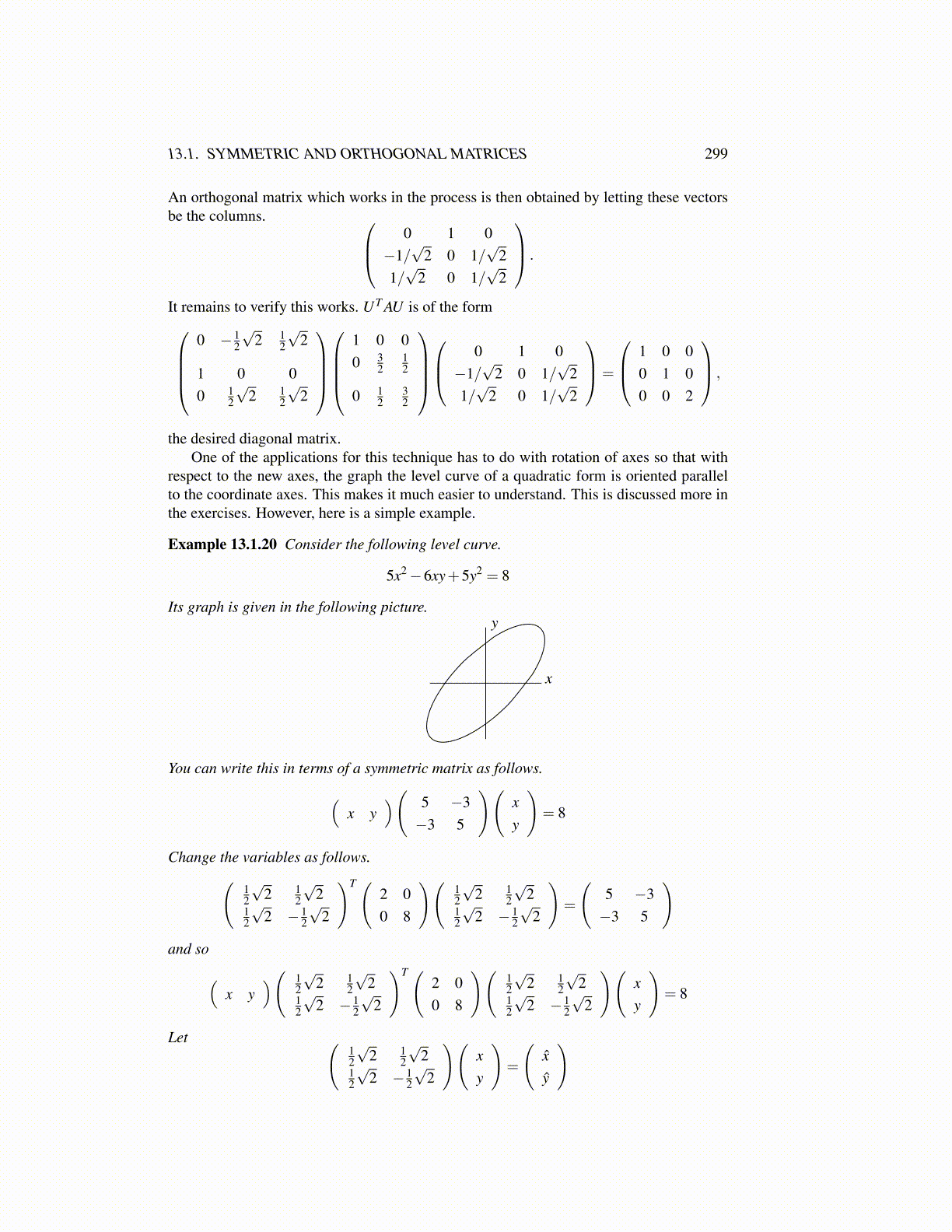
13.1. SYMMETRIC AND ORTHOGONAL MATRICES 299
An orthogonal matrix which works in the process is then obtained by letting these vectorsbe the columns. 0 1 0
−1/√
2 0 1/√
21/√
2 0 1/√
2
.
It remains to verify this works. UT AU is of the form0 − 1
2
√2 1
2
√2
1 0 00 1
2
√2 1
2
√2
1 0 00 3
212
0 12
32
0 1 0−1/√
2 0 1/√
21/√
2 0 1/√
2
=
1 0 00 1 00 0 2
,
the desired diagonal matrix.One of the applications for this technique has to do with rotation of axes so that with
respect to the new axes, the graph the level curve of a quadratic form is oriented parallelto the coordinate axes. This makes it much easier to understand. This is discussed more inthe exercises. However, here is a simple example.
Example 13.1.20 Consider the following level curve.
5x2−6xy+5y2 = 8
Its graph is given in the following picture.
x
y
You can write this in terms of a symmetric matrix as follows.(x y
)( 5 −3−3 5
)(xy
)= 8
Change the variables as follows.(12
√2 1
2
√2
12
√2 − 1
2
√2
)T (2 00 8
)(12
√2 1
2
√2
12
√2 − 1
2
√2
)=
(5 −3−3 5
)and so(
x y)( 1
2
√2 1
2
√2
12
√2 − 1
2
√2
)T (2 00 8
)(12
√2 1
2
√2
12
√2 − 1
2
√2
)(xy
)= 8
Let (12
√2 1
2
√2
12
√2 − 1
2
√2
)(xy
)=
(x̂ŷ
)